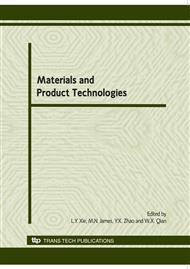p.32
p.37
p.43
p.49
p.54
p.59
p.65
p.70
p.75
Experimental Observations of Dominant Effective Short Fatigue Crack Behavior for Railway LZ50 Axle Steel
Abstract:
, was experimentally investigated by a replica technique to seven smooth hourglass shaped specimens for railway LZ50 axle steel. Character of two-stages, i.e. the micro-structural short crack (MSC) stage and the physical short crack (PSC) stage, was revealed for the crack initiation and growth. Most importantly, the crack growth rate exhibited decelerations twice in MSC stage. This behavior was corresponding to the ferrite grain boundary firstly and then to the pearlite banded structure. The boundary appeared a barrier because there were pearlites around with significant higher micro-hardness values. The banded structure appeared a barrier because each band was rich in hard layered pearlites for the crack to cross. In PSC stage, the crack propagated with a decreasing resistance of micro-structural barriers as the crack length increased. The two barriers are inherent in the material and the crack initiation and growth are subjected to an evolutionary process under competition between the inherent resistances from the barriers and the increasing driving force from the growing crack size. This provides a prehensive understanding of the crack initiation and growth.
Info:
Periodical:
Pages:
54-58
Citation:
Online since:
June 2010
Authors:
Keywords:
Price:
Сopyright:
© 2010 Trans Tech Publications Ltd. All Rights Reserved
Share:
Citation:


